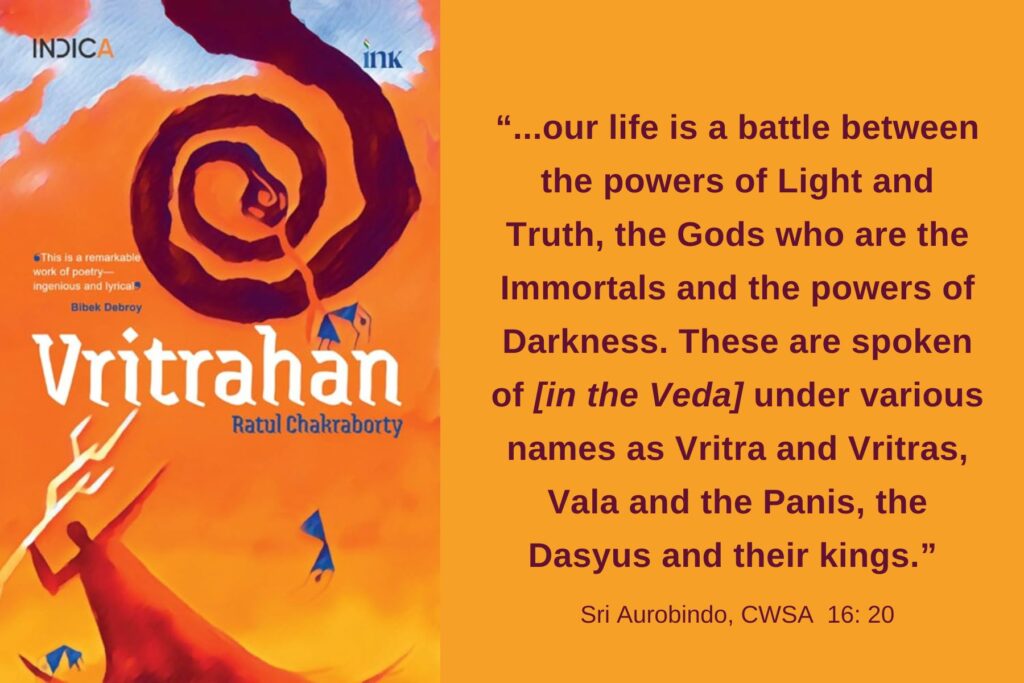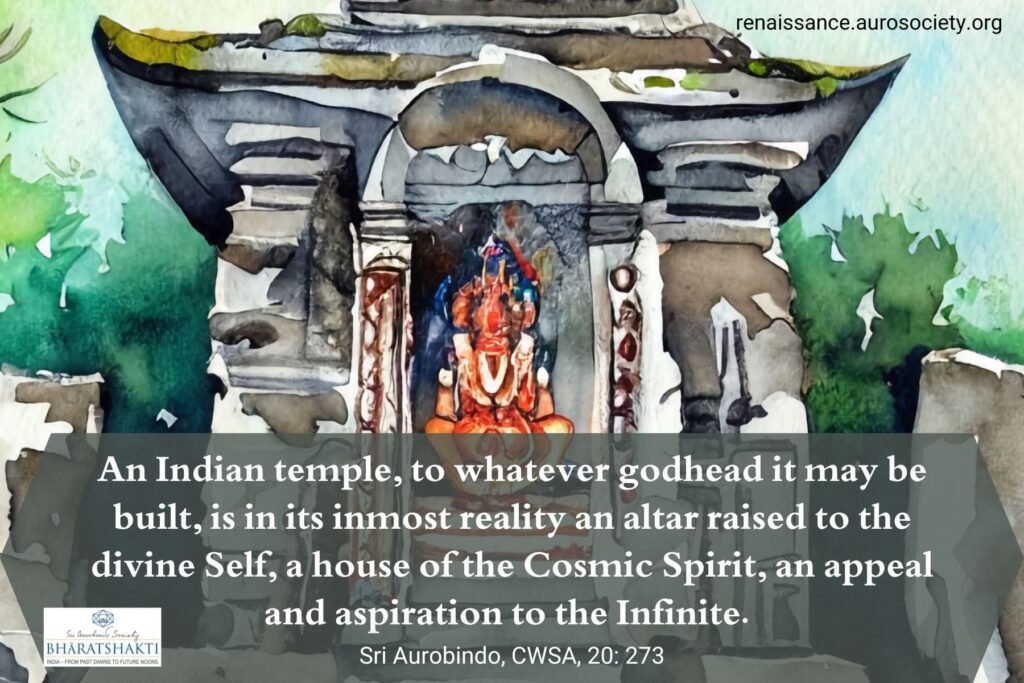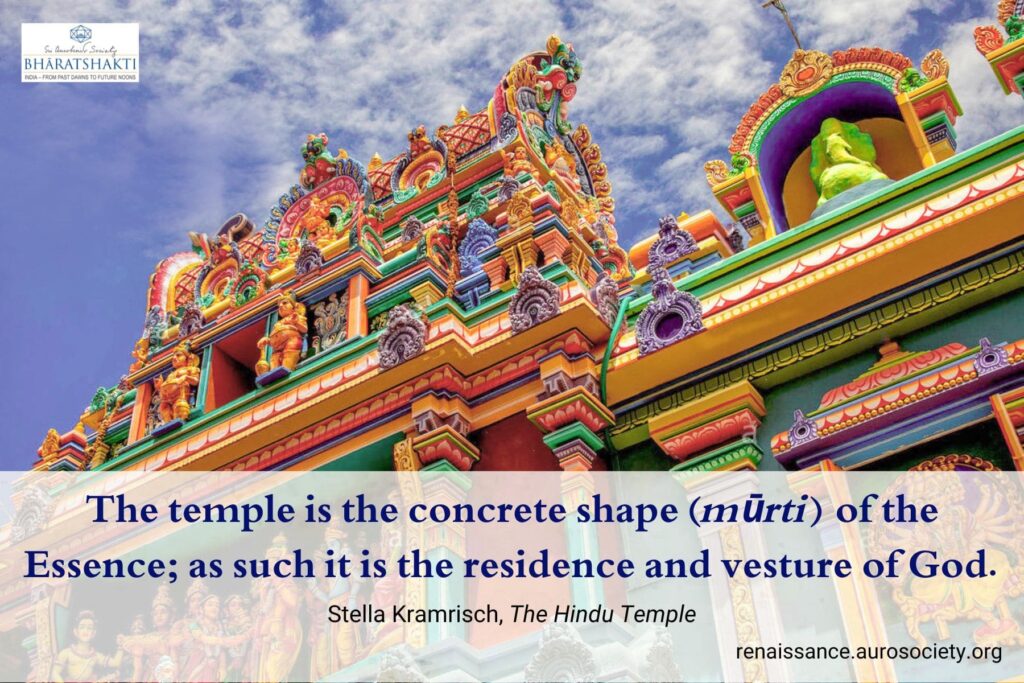Volume V, Issue 8
Author: Sri Aurobindo
Continued from PART 1
Editor’s Note: In this part 2, we have selected passages in which Sri Aurobindo explains that the Avatar comes to bring nearer the kingdom of heaven on earth in the collectivity as well as to build the kingdom of heaven within in the individual human soul.

A Double Sense and Form of the Avatar’s Work
The work for which the Avatar descends has like his birth a double sense and a double form. It has an outward side of the divine force acting upon the external world in order to maintain there and to reshape the divine law by which the Godward effort of humanity is kept from decisive retrogression and instead decisively carried forward in spite of the rule of action and reaction, the rhythm of advance and relapse by which Nature proceeds.
It has an inward side of the divine force of the Godward consciousness acting upon the soul of the individual and the soul of the race, so that it may receive new forms of revelation of the Divine in man and may be sustained, renewed and enriched in its power of upward self-unfolding. The Avatar does not descend merely for a great outward action, as the pragmatic sense in humanity is too often tempted to suppose. Action and event have no value in themselves, but only take their value from the force which they represent and the idea which they symbolise and which the force is there to serve.
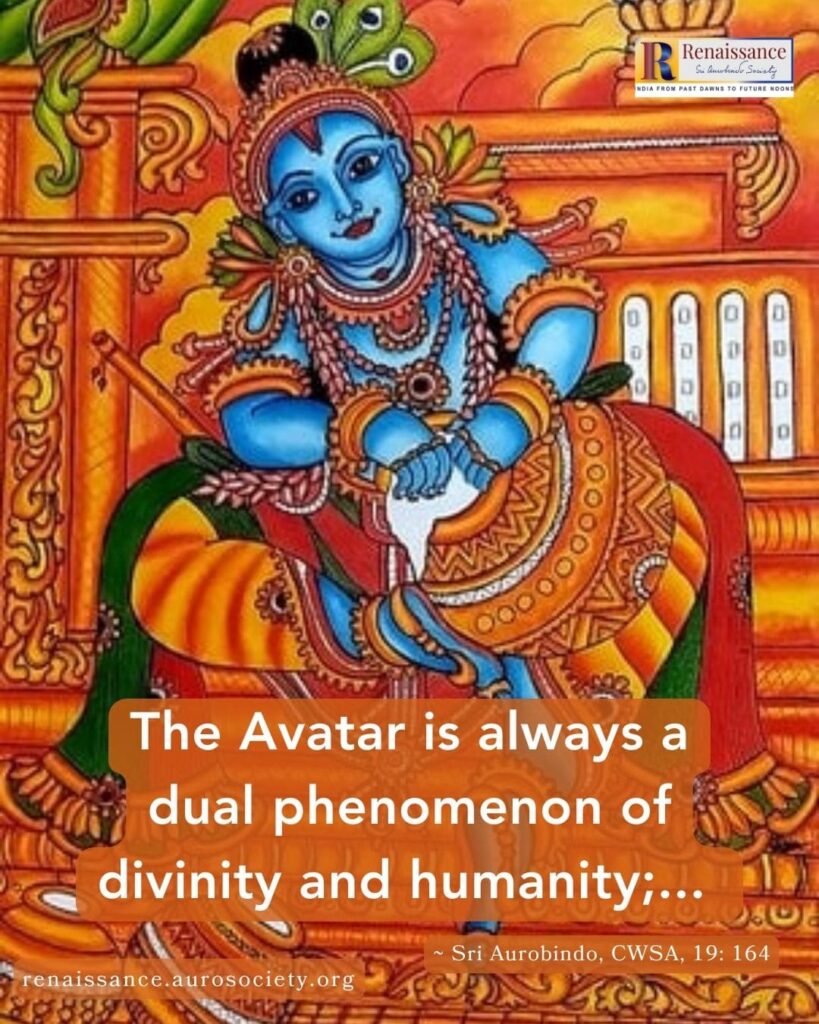
The Avatar and the Vibhūti
The crisis in which the Avatar appears, though apparent to the outward eye only as a crisis of events and great material changes, is always in its source and real meaning a crisis in the consciousness of humanity when it has to undergo some grand modification and effect some new development. For this action of change a divine force is needed; but the force varies always according to the power of consciousness which it embodies; hence the necessity of a divine consciousness manifesting in the mind and soul of humanity.
Where, indeed, the change is mainly intellectual and practical, the intervention of the Avatar is not needed; there is a great uplifting of consciousness, a great manifestation of power in which men are for the time being exalted above their normal selves, and this surge of consciousness and power finds its wave-crests in certain exceptional individuals, vibhūtis, whose action leading the general action is sufficient for the change intended.
The Reformation in Europe and the French Revolution were crises of this character; they were not great spiritual events, but intellectual and practical changes, one in religious, the other in social and political ideas, forms and motives, and the modification of the general consciousness brought about was a mental and dynamic, but not a spiritual modification.
But when the crisis has a spiritual seed or intention, then a complete or a partial manifestation of the God-consciousness in a human mind and soul comes as its originator or leader. That is the Avatar.
~ Sri Aurobindo, CWSA, Vol. 19, pp. 168-169
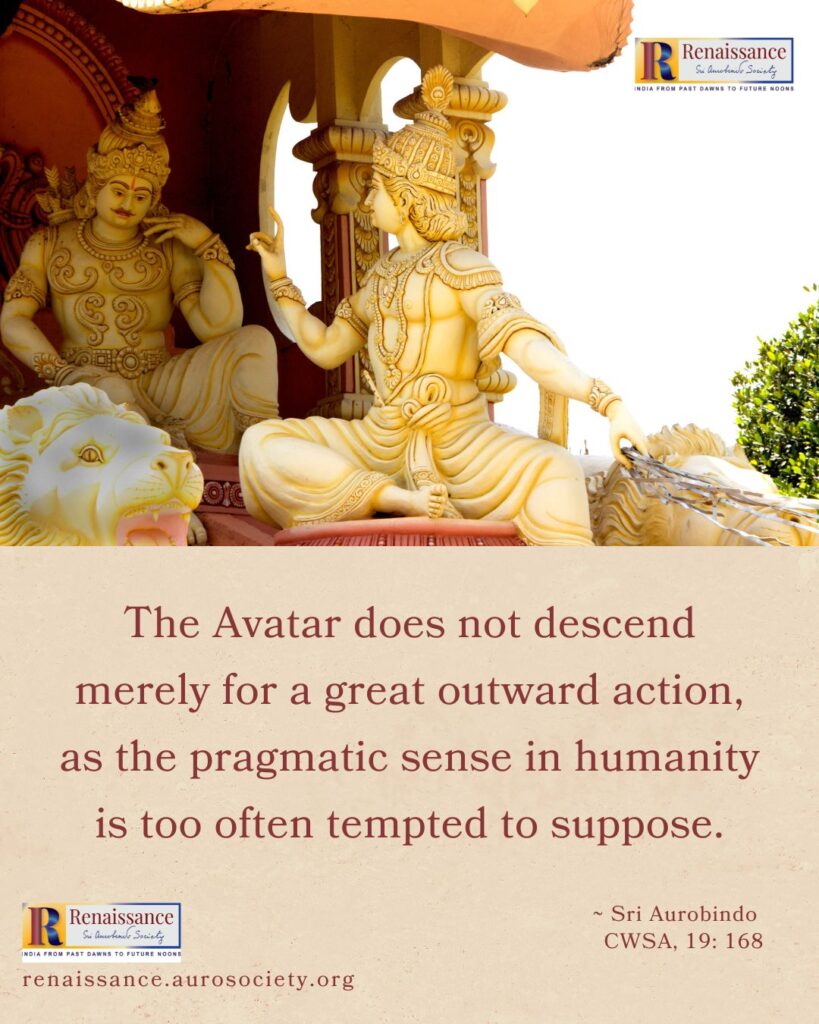
Two Aspects of the Divine Birth
…we have to remark carefully that the upholding of Dharma in the world is not the only object of the descent of the Avatar, that great mystery of the Divine manifest in humanity; for the upholding of the Dharma is not an all-sufficient object in itself, not the supreme possible aim for the manifestation of a Christ, a Krishna, a Buddha, but is only the general condition of a higher aim and a more supreme and divine utility.
For there are two aspects of the divine birth; one is a descent, the birth of God in humanity, the Godhead manifesting itself in the human form and nature, the eternal Avatar; the other is an ascent, the birth of man into the Godhead, man rising into the divine nature and consciousness, madbhāvam āgataḥ; it is the being born anew in a second birth of the soul. It is that new birth which Avatarhood and the upholding of the Dharma are intended to serve.
This double aspect in the Gita’s doctrine of Avatarhood is apt to be missed by the cursory reader satisfied, as most are, with catching a superficial view of its profound teachings, and it is missed too by the formal commentator petrified in the rigidity of the schools. Yet it is necessary, surely, to the whole meaning of the doctrine.
Otherwise the Avatar idea would be only a dogma, a popular superstition, or an imaginative or mystic deification of historical or legendary supermen, not what the Gita makes all its teaching, a deep philosophical and religious truth and an essential part of or step to the supreme mystery of all, rahasyam uttamam.
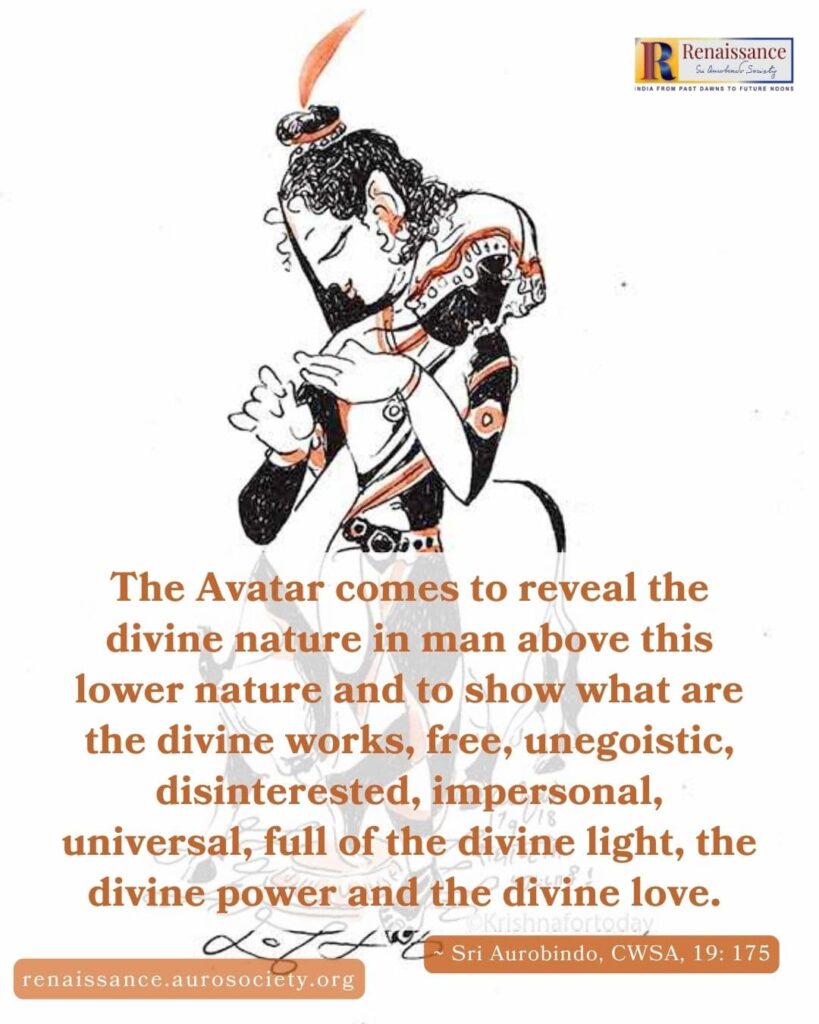
The Avatar as the Way
If there were not this rising of man into the Godhead to be helped by the descent of God into humanity, Avatarhood for the sake of the Dharma would be an otiose phenomenon, since mere Right, mere justice or standards of virtue can always be upheld by the divine omnipotence through its ordinary means, by great men or great movements, by the life and work of sages and kings and religious teachers, without any actual incarnation.
The Avatar comes as the manifestation of the divine nature in the human nature, the apocalypse of its Christhood, Krishnahood, Buddhahood, in order that the human nature may by moulding its principle, thought, feeling, action, being on the lines of that Christhood, Krishnahood, Buddhahood transfigure itself into the divine.
The law, the Dharma which the Avatar establishes is given for that purpose chiefly; the Christ, Krishna, Buddha stands in its centre as the gate, he makes through himself the way men shall follow. That is why each Incarnation holds before men his own example and declares of himself that he is the way and the gate; he declares too the oneness of his humanity with the divine being, declares that the Son of Man and the Father above from whom he has descended are one, that Krishna in the human body, mānuṣīṁ tanum āśritam, and the supreme Lord and Friend of all creatures are but two revelations of the same divine Purushottama, revealed there in his own being, revealed here in the type of humanity.
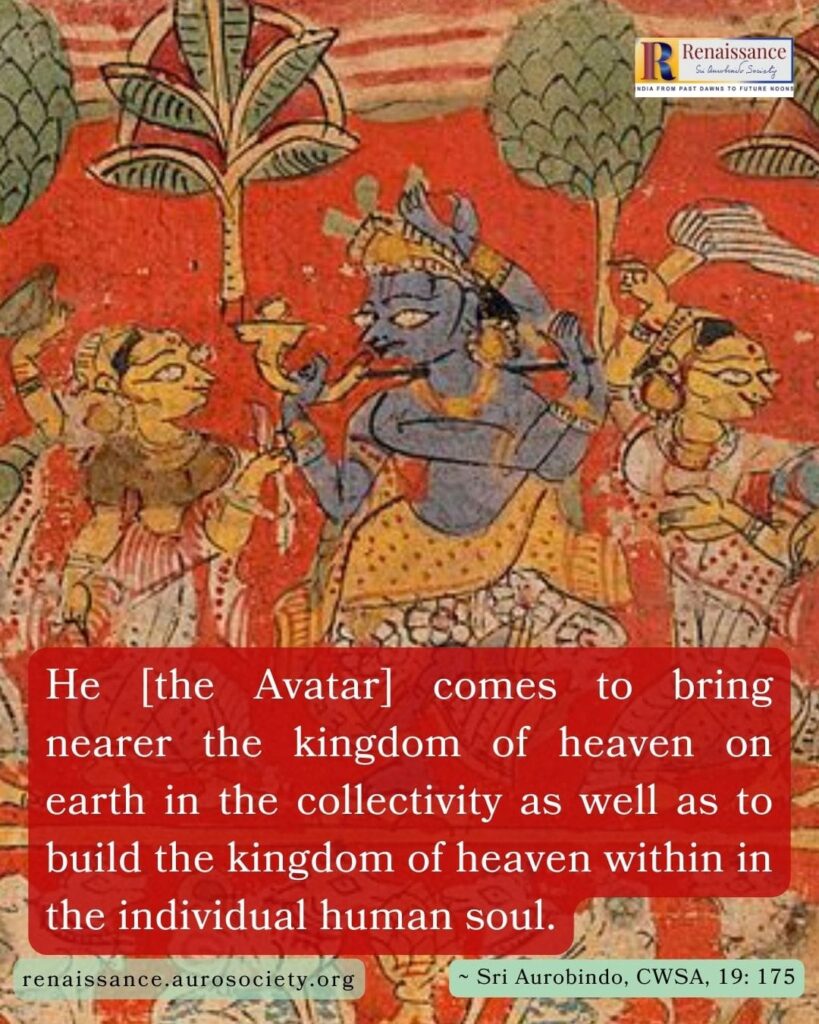
Always a Permanent Effect of the Avatar’s Work
The Avatar may descend as a great spiritual teacher and saviour, the Christ, the Buddha, but always his work leads, after he has finished his earthly manifestation, to a profound and powerful change not only in the ethical, but in the social and outward life and ideals of the race. He may, on the other hand, descend as an incarnation of the divine life, the divine personality and power in its characteristic action, for a mission ostensibly social, ethical and political, as is represented in the story of Rama or Krishna; but always then this descent becomes in the soul of the race a permanent power for the inner living and the spiritual rebirth.
It is indeed curious to note that the permanent, vital, universal effect of Buddhism and Christianity has been the force of their ethical, social and practical ideals and their influence even on the men and the ages which have rejected their religious and spiritual beliefs, forms and disciplines; later Hinduism which rejected Buddha, his saṅgha, and his dharma, bears the ineffaceable imprint of the social and ethical influence of Buddhism and its effect on the ideas and the life of the race, while in modern Europe, Christian only in name, humanitarianism is the translation into the ethical and social sphere and the aspiration to liberty, equality and fraternity the translation into the social and political sphere of the spiritual truths of Christianity, the latter especially being effected by men who aggressively rejected the Christian religion and spiritual discipline and by an age which in its intellectual effort of emancipation tried to get rid of Christianity as a creed.
On the other hand the life of Rama and Krishna belongs to the prehistoric past which has come down only in poetry and legend and may even be regarded as myths; but it is quite immaterial whether we regard them as myths or historical facts, because their permanent truth and value lie in their persistence as a spiritual form, presence, influence in the inner consciousness of the race and the life of the human soul.
Avatarhood is a fact of divine life and consciousness which may realise itself in an outward action, but must persist, when that action is over and has done its work, in a spiritual influence; or may realise itself in a spiritual influence and teaching, but must then have its permanent effect, even when the new religion or discipline is exhausted, in the thought, temperament and outward life of mankind.
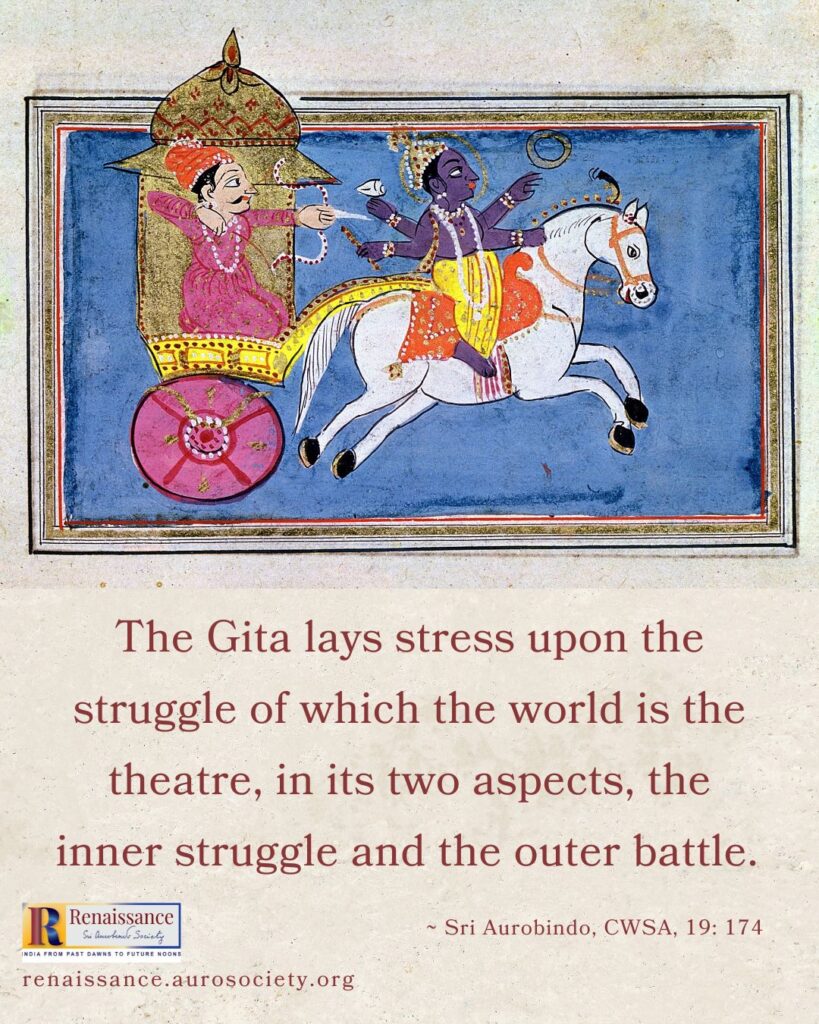
The Outer and Inner Struggles
The Gita lays stress upon the struggle of which the world is the theatre, in its two aspects, the inner struggle and the outer battle.
In the inner struggle the enemies are within, in the individual, and the slaying of desire, ignorance, egoism is the victory. But there is an outer struggle between the powers of the Dharma and the Adharma in the human collectivity. The former is supported by the divine, the godlike nature in man, and by those who represent it or strive to realise it in human life, the latter by the Titanic or demoniac, the Asuric and Rakshasic nature whose head is a violent egoism, and by those who represent and strive to satisfy it.
This is the war of the Gods and Titans, the symbol of which the old Indian literature is full, the struggle of the Mahabharata of which Krishna is the central figure being often represented in that image; the Pandavas who fight for the establishment of the kingdom of the Dharma, are the sons of the Gods, their powers in human form, their adversaries are incarnations of the Titanic powers, they are Asuras.
This outer struggle too the Avatar comes to aid, directly or indirectly, to destroy the reign of the Asuras, the evil-doers, and in them depress the power they represent and to restore the oppressed ideals of the Dharma. He comes to bring nearer the kingdom of heaven on earth in the collectivity as well as to build the kingdom of heaven within in the individual human soul.
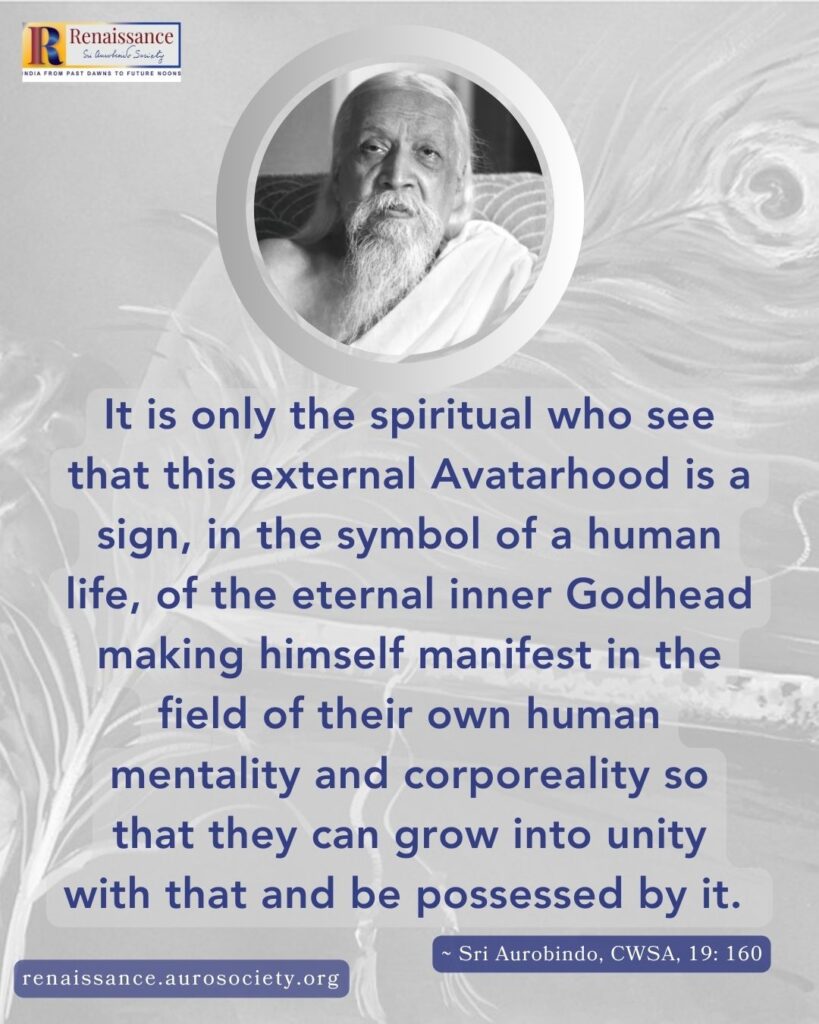
The Inner Fruit of the Avatar’s Coming
The inner fruit of the Avatar’s coming is gained by those who learn from it the true nature of the divine birth and the divine works and who, growing full of him in their consciousness and taking refuge in him with their whole being, manmayā mām upāśritāḥ, purified by the realising force of their knowledge and delivered from the lower nature, attain to the divine being and divine nature, madbhāvam.
The Avatar comes to reveal the divine nature in man above this lower nature and to show what are the divine works, free, unegoistic, disinterested, impersonal, universal, full of the divine light, the divine power and the divine love. He comes as the divine personality which shall fill the consciousness of the human being and replace the limited egoistic personality, so that it shall be liberated out of ego into infinity and universality, out of birth into immortality.
He comes as the divine power and love which calls men to itself, so that they may take refuge in that and no longer in the insufficiency of their human wills and the strife of their human fear, wrath and passion, and liberated from all this unquiet and suffering may live in the calm and bliss of the Divine.
CONCLUDED
READ PART 1
~ Content Research & Design: Beloo Mehra

